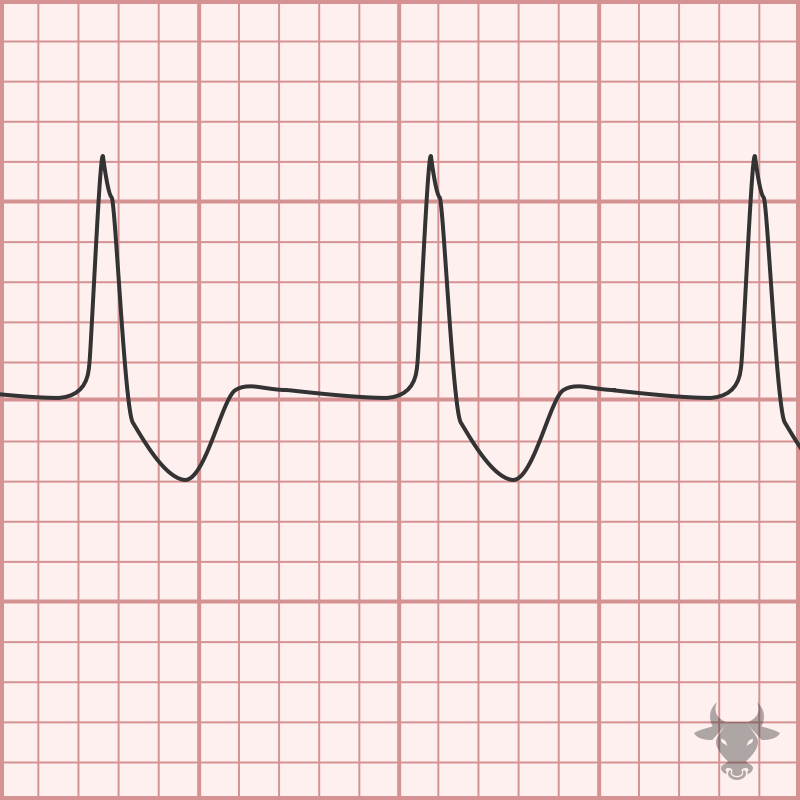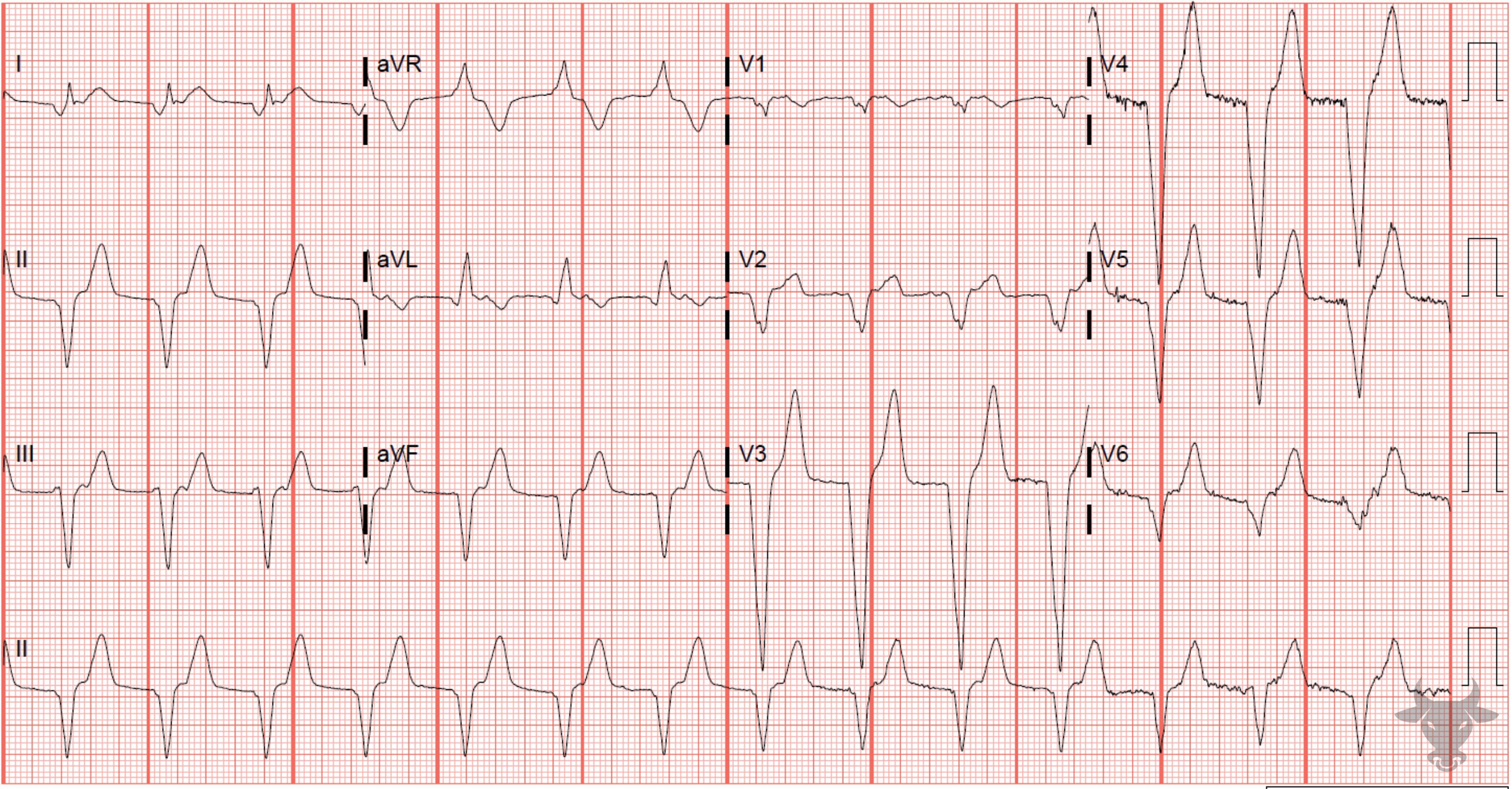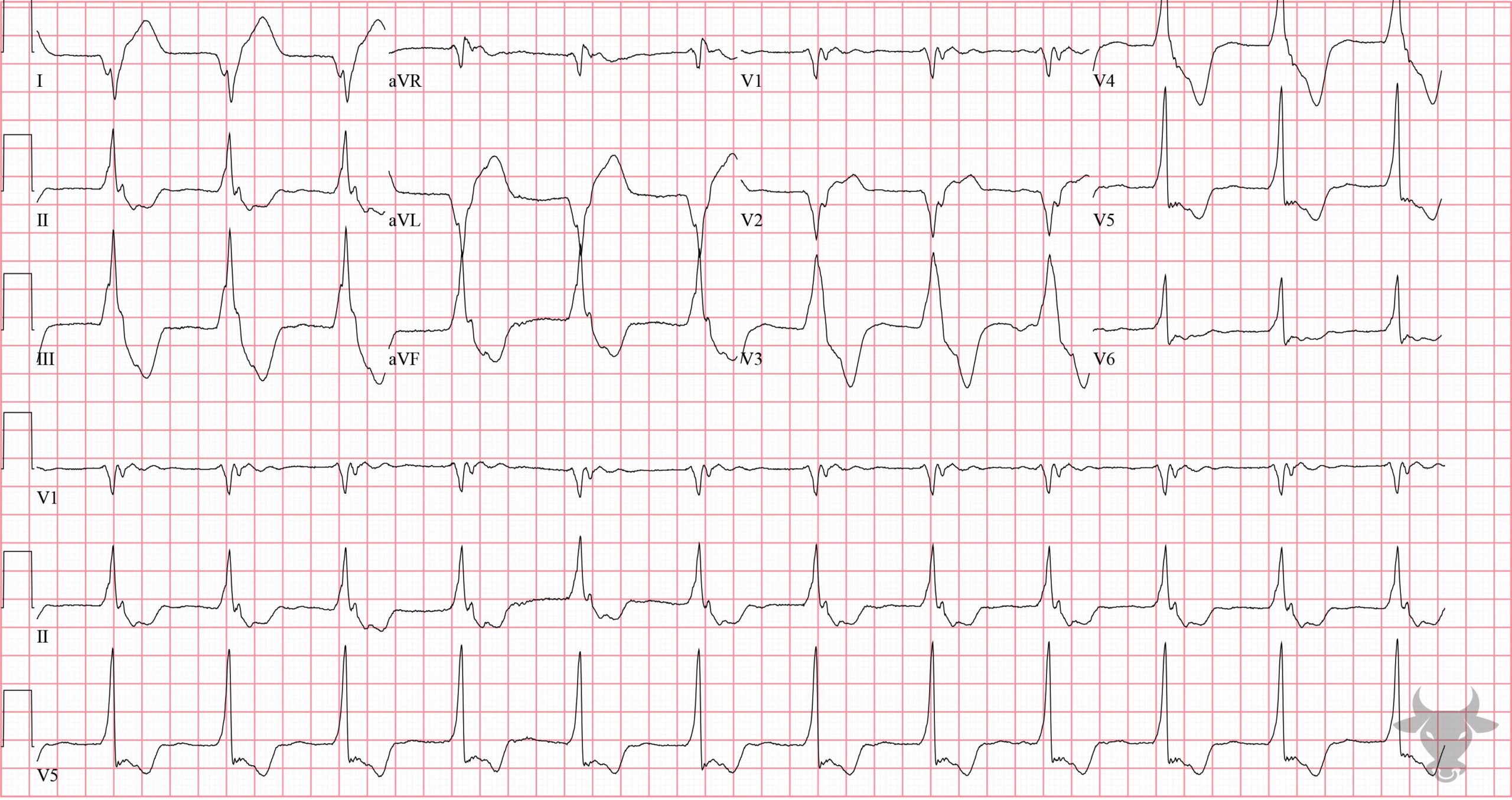AIVR is a rhythm that occurs under conditions of enhanced automaticity. An enhanced ectopic ventricular pacemaker outpaces more superior pacemakers (e.g. sinus node) and, thus, becomes the dominant pacemaker by usurping control. It occurs at a rate faster than ventricular escape, but slower than ventricular tachycardia (i.e. between 50 and 110 beats/min). AIVR can occur for many reasons including electrolyte abnormalities and drug toxicity (e.g. digoxin), however, it occurs most commonly in the setting of reperfusion – that is, after myocardial infarction or cardiac arrest. The prognosis is not adversely affected because the ventricular rate is in the normal range.
Accelerated Idioventricular Rhythm

Examples

Accelerated Idioventricular Rhythm
This ECG represented spontaneous reperfusion. The patient received percutaneous coronary intervention to the proximal left anterior descending artery.
Accelerated Idioventricular Rhythm
This ECG represented spontaneous reperfusion. The patient was confirmed to have a 90% occluded obtuse marginal culprit lesion.References
- Surawicz B, Knilans TK. Chou’s Electrocardiography in Clincal Practice. 6th ed. Philadelphia, PA: Elsevier; 2008.
- Mattu A, Tabas J, Brady W. Electrocardiography in Emergency, Acute, and Critical Care. 2nd ed. Dallas, TX: The American College of Emergency Physicians; 2019.
- Riera ARP, Barros RB, Sousa FD de, Baranchuk A. Accelerated Idioventricular Rhythm: History and Chronology of the Main Discoveries. Indian Pacing Electrophysiol J. 2010;10(1):40. /pmc/articles/PMC2803604/. Accessed July 29, 2021.
- AD P, T S. Arrhythmic complications of acute coronary syndromes. Emerg Med Clin North Am. 2005;23(4):1065-1082.
